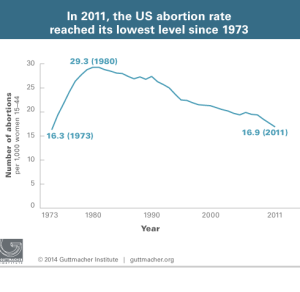MTV’s 16 and Pregnant is beginning its fifth season on April 14th. Even more than the season opening trailer, we think this clip shows how poignant the show details incidents along the way:
16 and Pregnant Season 5 Preview
With the release of the final 2012 birth data at the end of 2013, the trend in lower fertility in the US was again well-documented. But the overall decrease was fully lead by the age group 15-29. All age categories 30+ were up in birth rates. So the message is that women are waiting longer – seemingly planning their pregnancies. Teens pregnancy rates remain high, but plummeting, as do the rates for young women aged 20-24.
All this sounds like great news though this positive trend is generating stories like Americans are having dogs instead of babies. We don’t get it. Either folks complain about teen pregnancy or now that the fertility rate has dropped – which is statistically of course the short-term result when one category within the overall numbers deviates, even if that deviation signifies a positive social trend in society.
But another thought occurs.
MTV describes their show as
“an hour-long documentary series focusing on the controversial subject of teen pregnancy. Each episode follows a 5-7 month period in the life of a teenager as she navigates the bumpy terrain of adolescence, growing pains, rebellion, and coming of age; all while dealing with being pregnant. Each story offers a unique look into the wide variety of challenges pregnant teens face: marriage, adoption, religion, gossip, finances, rumors among the community, graduating high school, getting (or losing) a job. Faced with incredibly adult decisions, these girls are forced to sacrifice their teenage years and their high school experiences.”
And anyone who has watched will agree, there are no hidden punch lines. It is, what it is – real reality TV.
Can the impact on teen pregnancy rates stem also from this show?
Like this:
Like Loading...








